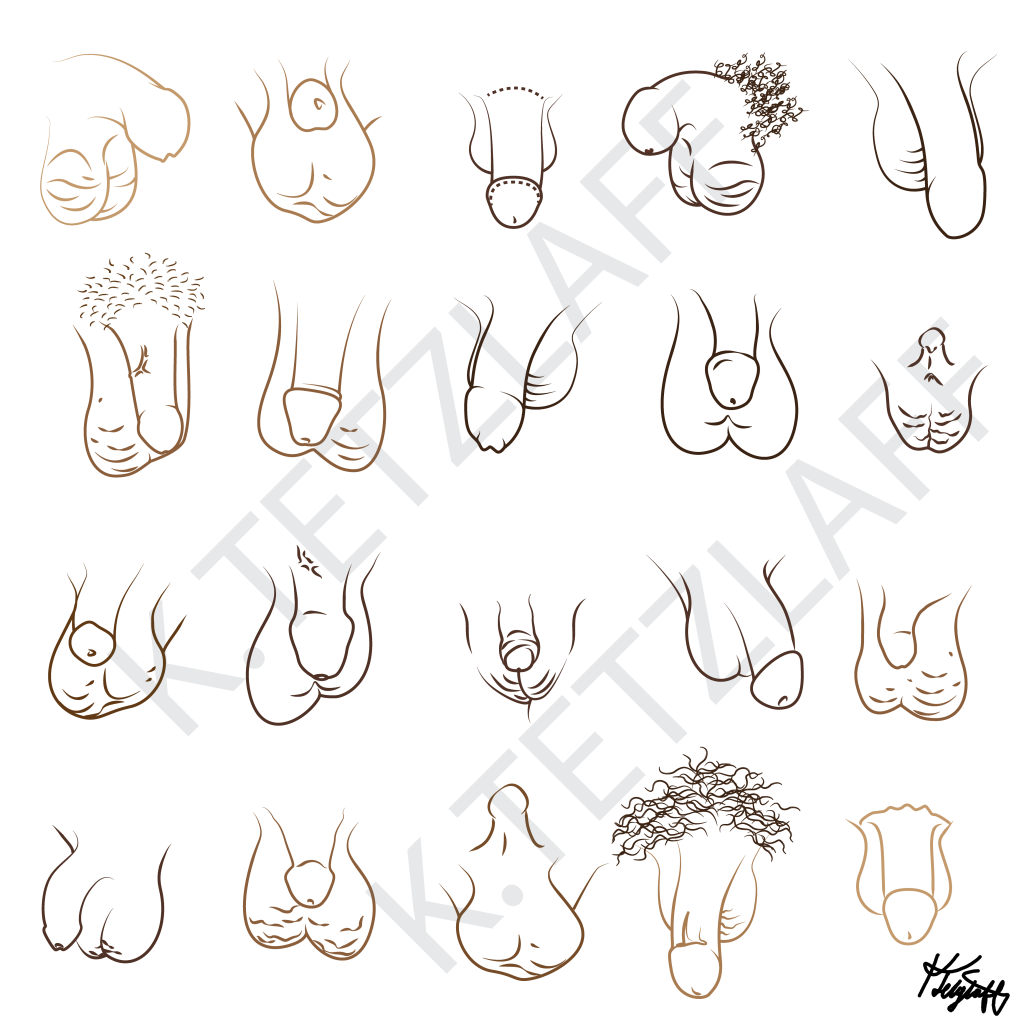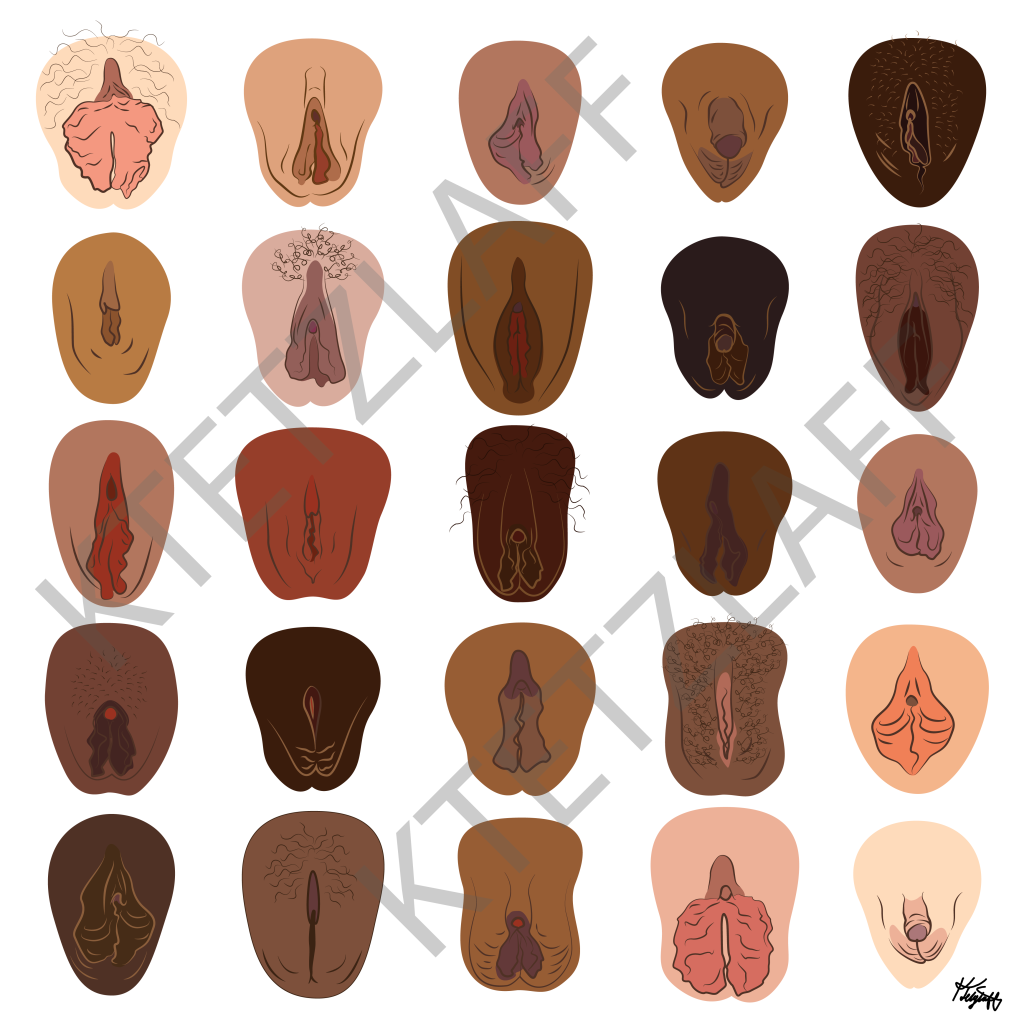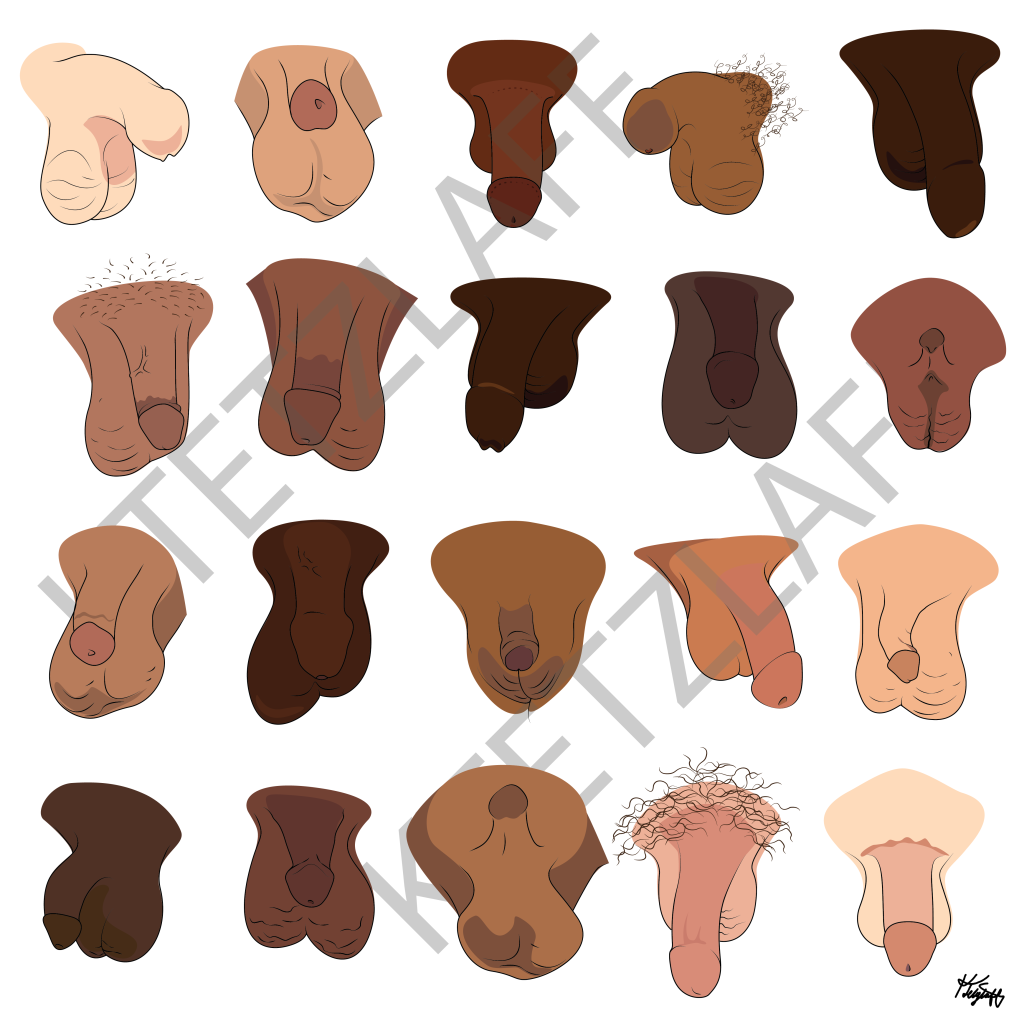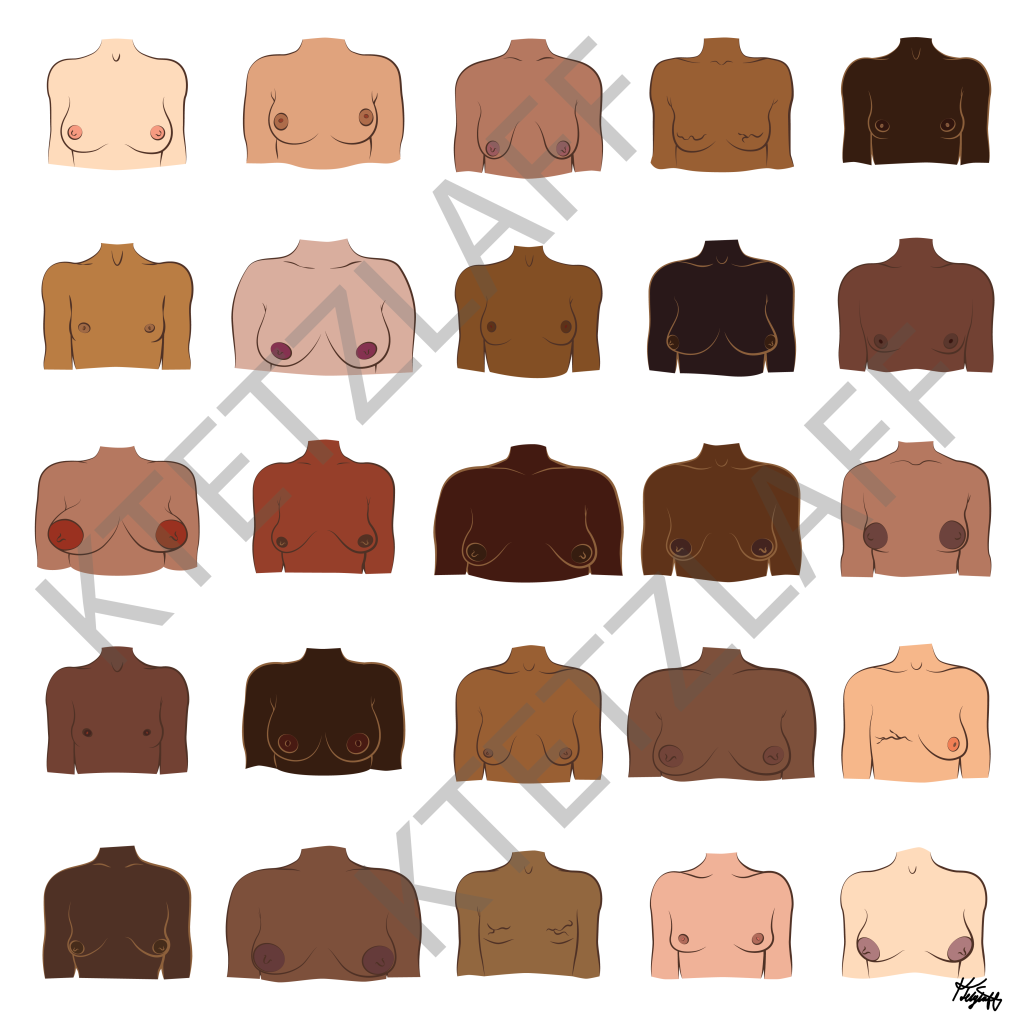Looking to purchase individual illustrations or an illustration package? Contact me!

Sex
Much of what we are taught in sex education (“sex ed”) is incomplete and/or incorrect, starting with the assumption that there are two sexes and genders. Gender is different from sex and sexuality, and neither gender nor sexuality is determined by any biological characteristic of sex (chromosomes, hormone levels, external genitals, internal reproductive systems, gonadal tissue type, pubertal changes, etc.) It is important to learn (and in some cases, unlearn what we’ve been taught) about sex, sexuality, and gender.
Let’s start with sex and characteristics. And to begin, it’s often helpful to ground any audience with images that are more familiar, like binary ones from Sex Ed, medical textbooks, art, etc. The medical illustrations below of male-typical and female-typical anatomy is more accurate (based on actual human subjects, averaged sizes, and generalized proportions) than what is typically seen or taught (see Sex Anatomy Normativity.) Please note that whatever a person uses to identify their anatomy is their own decision; terms used here are constrained to current medical/scientific language but with intentional use of overlapping anatomical terminology.
Due to how we develop before birth, all bodies are more alike than they are different, and this includes sex anatomy. Until around 6 weeks of gestation, undeveloped sex anatomy is essentially the same inside and outside of all embryos. The differentiation of fetal sex anatomy cannot occur until certain genes are activated in the gonads to release hormones. Having common building blocks from early in embryonic development is why adult bodies have analogous anatomy with similar functions that respond predictably to hormones – and why all bodies have nipples! There are plenty of other similarities too.
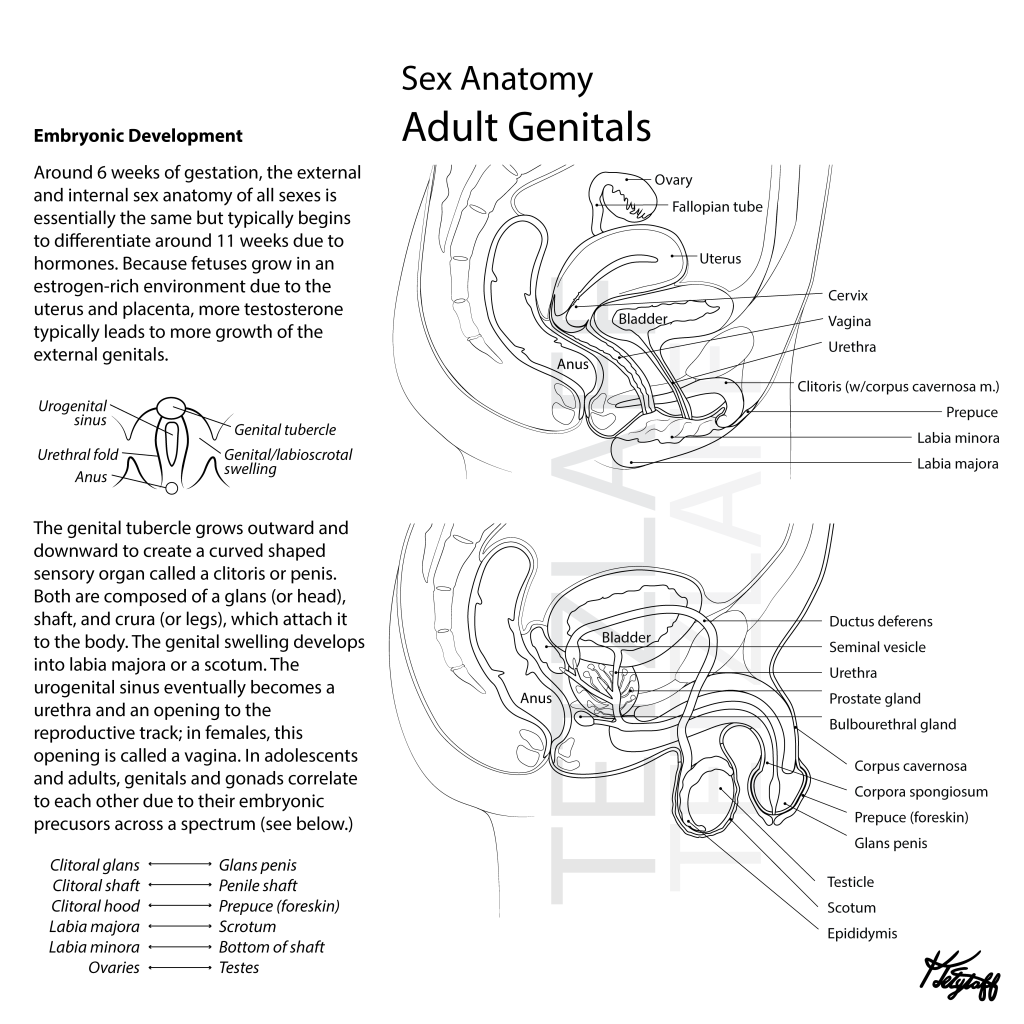
Genetics, genitals, and gonads, in addition to environmental factors, all play a role in the development of sex and reproductive anatomy, which changes across the lifespan. For these reasons, the vast majority of people have external genitals that look different from the common hyper-masculinized and and hyper-feminized binary versions. To view these variations, below are diverse depictions of real people and real bodies. Note, while these images are of adults, pubic hair has generally been omitted for clarity.


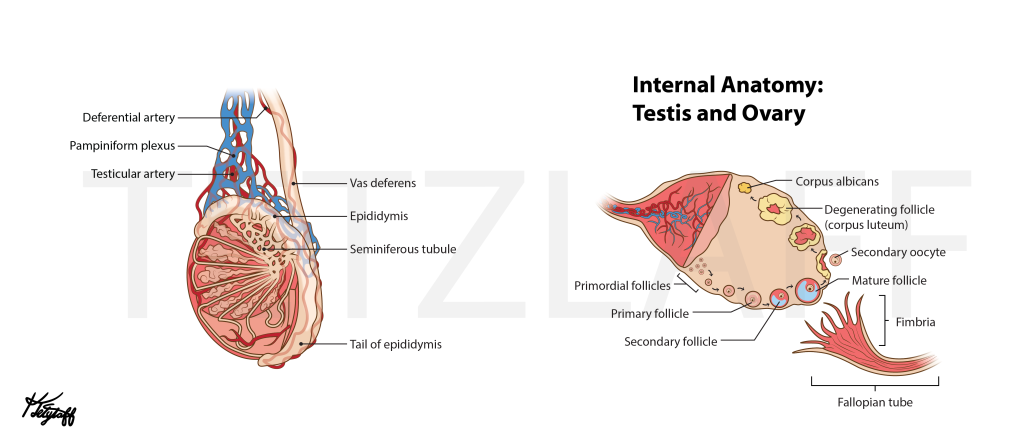
Sexual Functioning
Did you know that as a result of embryonic development, all genitals can get lubricated (“wet”) and erect (“hard”) during arousal? Glands release lubricating substances (i.e.: vaginal and para-vaginal secretions, pre-ejaculate fluid, etc.) to prepare for insertion and/or reduce friction; therefore, it is accurate to say that all bodies get “wet.” Unique tissues that fill with blood, such as corpus cavernosum muscles and spongy tissues found in the glans/head (of the penis and clitoris), are responsible for erections to increase sensation, aid in rigidity and/or penetration, etc; therefore, all bodies get “hard.” While the mechanism of pre-ejaculate, ejaculate, and vaginal secretions are well-know, how female ejaculation (“squirting”) occurs is still debated among scientists.

In regards to the study of sex anatomy in general, non-male bodies are routinely less studied. Much of the clitoris is internal, and therefore many medical illustrations of external genitals do not accurately show the its size and shape, which is one of many reasons why it has historically been referred to as a “pea-sized organ” that was “discovered” at the end of the last century. Like a penis, the clitoris has long legs (crura pl., crus s.) that attach to the underside of the pelvis and a shaft that acts like an anchor to allow it to straighten and become larger when aroused; like a penis, the clitoris curves downward and reduces in size when unaroused. But unlike a penis, the clitoris is the only organ in any body that is exclusively for pleasure.
Reproduction


